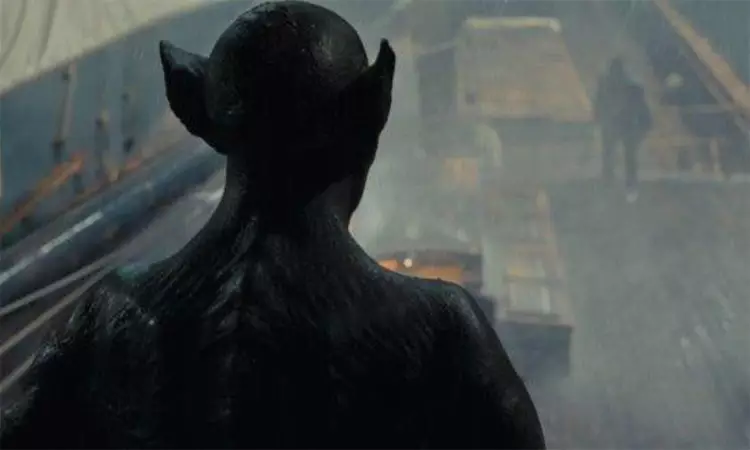Anders Øvredal’s film, “The Last Voyage of the Demeter,” reimagines a lesser-known segment of Bram Stoker’s iconic “Dracula.” From the outset, the ominous tone is palpable. Captain Eliot, portrayed by Liam Cunningham, encapsulates the film’s grim essence when he states, “We’re a doomed crew, on a doomed ship.” This fatalistic viewpoint is not merely a thematic element; it serves as a lens through which the audience understands the doomed fate of the ship and its crew. The film begins at its denouement, where the Demeter is found stranded at Whitby, a ghost ship floating with its haunted narrative. The foreboding atmosphere established in the opening sequences prepares viewers for the imminent horror that unfolds, underscoring a sense of inevitability that pervades throughout the storyline.
One of the film’s most significant aspects is its introduction of new characters that challenge the conventions established in Stoker’s original text. The character of Dr. Clemens, played by Corey Hawkins, is essential to this. A Cambridge-educated Black man, Clemens represents the notions of progress and change, pushing against the rigid racial constructs of 19th-century Europe. His inclusion enables the adaptation to transcend its origins, inviting discussions about race, belonging, and societal obstacles. Through Clemens’ journey, the film posits that hope persists, even amid despair. The character of Anna, an ailing stowaway played by Aisling Franciosi, amplifies this through her intimate knowledge of the lurking menace on board, creating a dichotomy between innocence and impending doom.
The narrative also brings Toby, the Captain’s grandson portrayed by Woody Norman, into play—a stark reminder of the innocence entwined in horror. The juxtaposition of his youthful perspective against the grotesque reality of their situation adds depth to the moral questions at hand. Clemens’ counsel to Toby, citing the uncontrollable nature of their reality, embodies the film’s exploration of the limits of human agency when faced with monstrous evil. This represents a subtle yet impactful departure from Stoker’s work, introducing readers to themes of resilience and communal struggle against overwhelming odds.
While Dracula has often been depicted as a suave, charming figure, “The Last Voyage of the Demeter” returns to a more primordial representation of the vampire. The portrayal of Dracula, played by Javier Botet, is reminiscent of classic horror, presenting him as an almost animalistic, bat-like terror reminiscent of F.W. Murnau’s “Nosferatu.” This interpretation strips Dracula of his seductive veneer, instead emphasizing a raw, predatory essence that heightens the film’s horror. In this form, Dracula is not just a killer; he embodies the heart of the film’s tragedy, a relentless force that systematically decimates the crew.
Furthermore, the movie operates on dual levels of tension—both psychological and physiological. Employing a narrative structure similar to Ridley Scott’s “Alien,” Øvredal crafts a maritime horror that emphasizes isolation and entrapment with the ocean serving as an unforgiving boundary. With a crew too far from land for any hope of rescue, the film morphs into an unnerving haunted house, utilizing the ship’s confined space to heighten fear. The impending doom manifests not only through Dracula’s prowling presence but also through the existential dread of the crew’s isolation and the impending loss of their very humanity.
In blending the historical realities of merchant marine life in the late 19th century with supernatural horror, Øvredal crafts a gothic narrative that reflects on societal change. The wooden Demeter, a vessel representing a bygone era clashing with the incoming age of steam and metal, becomes a metaphor for the struggle within society itself—a recognition that as advancements loom, some legacies must still confront their possibility of extinction. Øvredal’s film thus not only serves to entertain but also to critique and reveal the gradual yet inevitable transformations of its time.
“The Last Voyage of the Demeter” stands as a compelling reinterpretation of a segment of the Dracula mythos that manages to infuse traditional horror with contemporary themes. The film’s exploration of race, innocence, and the human condition amidst monstrous terror reanimates Stoker’s work in a thrillingly engaging manner, ensuring that the voyage continues to resonate long after the credits roll.

